
النبات

مواضيع عامة في علم النبات

الجذور - السيقان - الأوراق

النباتات الوعائية واللاوعائية

البذور (مغطاة البذور - عاريات البذور)

الطحالب

النباتات الطبية


الحيوان

مواضيع عامة في علم الحيوان

علم التشريح

التنوع الإحيائي

البايلوجيا الخلوية


الأحياء المجهرية

البكتيريا

الفطريات

الطفيليات

الفايروسات


علم الأمراض

الاورام

الامراض الوراثية

الامراض المناعية

الامراض المدارية

اضطرابات الدورة الدموية

مواضيع عامة في علم الامراض

الحشرات


التقانة الإحيائية

مواضيع عامة في التقانة الإحيائية


التقنية الحيوية المكروبية

التقنية الحيوية والميكروبات

الفعاليات الحيوية

وراثة الاحياء المجهرية

تصنيف الاحياء المجهرية

الاحياء المجهرية في الطبيعة

أيض الاجهاد

التقنية الحيوية والبيئة

التقنية الحيوية والطب

التقنية الحيوية والزراعة

التقنية الحيوية والصناعة

التقنية الحيوية والطاقة

البحار والطحالب الصغيرة

عزل البروتين

هندسة الجينات


التقنية الحياتية النانوية

مفاهيم التقنية الحيوية النانوية

التراكيب النانوية والمجاهر المستخدمة في رؤيتها

تصنيع وتخليق المواد النانوية

تطبيقات التقنية النانوية والحيوية النانوية

الرقائق والمتحسسات الحيوية

المصفوفات المجهرية وحاسوب الدنا

اللقاحات

البيئة والتلوث


علم الأجنة

اعضاء التكاثر وتشكل الاعراس

الاخصاب

التشطر

العصيبة وتشكل الجسيدات

تشكل اللواحق الجنينية

تكون المعيدة وظهور الطبقات الجنينية

مقدمة لعلم الاجنة


الأحياء الجزيئي

مواضيع عامة في الاحياء الجزيئي


علم وظائف الأعضاء


الغدد

مواضيع عامة في الغدد

الغدد الصم و هرموناتها

الجسم تحت السريري

الغدة النخامية

الغدة الكظرية

الغدة التناسلية

الغدة الدرقية والجار الدرقية

الغدة البنكرياسية

الغدة الصنوبرية

مواضيع عامة في علم وظائف الاعضاء

الخلية الحيوانية

الجهاز العصبي

أعضاء الحس

الجهاز العضلي

السوائل الجسمية

الجهاز الدوري والليمف

الجهاز التنفسي

الجهاز الهضمي

الجهاز البولي


المضادات الحيوية

مواضيع عامة في المضادات الحيوية

مضادات البكتيريا

مضادات الفطريات

مضادات الطفيليات

مضادات الفايروسات

علم الخلية

الوراثة

الأحياء العامة

المناعة

التحليلات المرضية

الكيمياء الحيوية

مواضيع متنوعة أخرى

الانزيمات
Aminotransferases
المؤلف:
Marcello Ciaccio
المصدر:
Clinical and Laboratory Medicine Textbook 2021
الجزء والصفحة:
p86-87
2025-03-26
621
The aminotransferases are a group of enzymes that catalyze the interconversion of amino acids to 2-oxy acids by transferring amino groups. While AST is found primarily in the heart, liver, muscle, and kidney, ALT is found primarily in the liver and kidney and, in smaller amounts, in the heart and skeletal muscle.
Clinical Significance
Hepatopathies are the most important cause of increased serum transaminase activity and thus represent the indication for requesting this test. Although the serum activity of both AST and ALT increases whenever a disease process affects the integrity of the liver cell, ALT is the most hepato-specific enzyme. Indeed, serum increases in ALT are rarely observed in conditions other than parenchymal liver disease. Furthermore, increases in ALT activity persist longer than those in AST. Therefore, it would be appropriate to abolish the determination of AST as a first level test, and laboratories that detect increased levels of ALT should offer the measurement of AST automatically as a reflex test on the same specimen, also calculating the AST/ALT ratio, since it can provide useful diagnostic and prognostic information.
In most liver diseases, ALT activity is higher than AST activity; exceptions may occur in alcoholic hepatitis, cirrhosis, and liver cancers. In viral hepatitis and other forms of liver disease associated with acute liver necrosis, serum transaminase activity increases before clinical signs and symptoms of the disease (such as jaundice) become apparent. The activity of both enzymes can reach values >100 times the URL, although 10- to 40-fold increases are more frequently detected. The most effective decisional cut-off for the diagnosis of acute hepatitis is 7 × URL (sensitivity and specificity >95%). In acute viral hepatitis, the peak of trans aminase activity occurs between days 7 and 12 after disease onset; activity then gradually decreases, reaching physiological concentrations between weeks 3 and 5 if the disease progresses without complications. It is important to note that peak transaminase activity has no relation to prognosis and, indeed, concentrations may decrease as the patient’s condition worsens, perhaps due to the loss of function of many hepatocytes.
Persistence of increased ALT levels for more than 6 months after an episode of acute hepatitis is used to diagnose chronic disease. Most patients with chronic hepatitis have a maximum ALT value <7 times the URL. However, ALT may be persistently normal in 15–50% of patients with chronic C virus hepatitis, although the likelihood of truly normal transaminases decreases with increasing frequency of measurements over time. It is therefore indicated that in patients with acute C virus hepatitis, ALT should be measured periodically over the next 1–2 years to determine its true normalization.
Nonalcoholic hepatic steatosis (NAFLD) is the most common cause of increased transaminases after viral and alcoholic hepatitis. NAFLD encompasses a spectrum of liver diseases, from simple steatosis to nonalcoholic steatohepatitis (NASH), in which inflammatory aspects and focal necro sis can progress to fibrosis, cirrhosis and liver failure. NAFLD is now considered an additional feature of metabolic syndrome. Indeed, increased transaminases in NAFLD are associated with the typical features of this syndrome, such as increased body mass index, fasting hypertriglyceridemia and hyperinsulinemia, and decreased levels of HDL cholesterol.
The transaminase activity observed during cirrhosis varies with the state of the cirrhotic process and can range from values around the URL to values four to five times higher, with an AST/ALT ratio >1, attributable to reduced ALT production in the damaged liver associated with reduced AST clearance as liver fibrosis progresses. An AST/ALT ratio ≥1 has a positive predictive value of ∼90% in diagnosing the presence of advanced fibrosis in patients with chronic liver disease. In addition, the magnitude of the increase in the AST/ALT ratio may reflect the degree of fibrosis in these patients.
Two- to fivefold increases in both enzymes occur in patients with primary or metastatic liver cancer, with AST usually greater than ALT, but the activities are often normal in the early stages of malignant liver infiltration. Slight or moderate increases in AST and ALT activity have been observed after administration of various drugs, such as non-steroidal anti-inflammatory drugs, antibiotics, antiepileptics, statins, or opioids. Over-the-counter medications and herbal preparations and homeopathic treatments may also be implicated. In subjects with increased transaminases, negative viral markers, and a negative history of drug or alcohol assumption, the diagnostic hypothesis should include the less common causes of chronic hepatopathy (hemochromatosis, Wilson’s disease, autoimmune hepatitis, primary biliary cirrhosis, sclerosing cholangitis, celiac dis ease, α1-antitrypsin deficiency).
AST activity is also increased in progressive muscular dystrophy and dermatomyositis, reaching concentrations up to eight times the URL. Several authors have described the possible presence of circulating immunoglobulin-bound AST, or macro-AST. The typical picture of this condition includes a persistent increase in serum AST activity with physiological ALT concentrations in an asymptomatic subject, with the absence of any pathology affecting AST-rich organs. The increased AST activity in this condition reflects decreased clearance of the immune complex from plasma. Macro-AST has no clinical relevance. However, their identification is important to avoid unnecessary diagnostic procedures in these subjects.
Reference Intervals
The URL of AST in adults is 34 U/L, with no significant sex- related difference. In contrast, a clear difference between males and females was noted in ALT activity, whose corresponding URLs are 59 U/L and 41 U/L, respectively. ALT shows no age-related difference, whereas serum AST activity in infants and children aged <3 years is twice that of adults. Adult values are reached when the child enters puberty.
 الاكثر قراءة في التحليلات المرضية
الاكثر قراءة في التحليلات المرضية
 اخر الاخبار
اخر الاخبار
اخبار العتبة العباسية المقدسة

الآخبار الصحية















 "المهمة".. إصدار قصصي يوثّق القصص الفائزة في مسابقة فتوى الدفاع المقدسة للقصة القصيرة
"المهمة".. إصدار قصصي يوثّق القصص الفائزة في مسابقة فتوى الدفاع المقدسة للقصة القصيرة (نوافذ).. إصدار أدبي يوثق القصص الفائزة في مسابقة الإمام العسكري (عليه السلام)
(نوافذ).. إصدار أدبي يوثق القصص الفائزة في مسابقة الإمام العسكري (عليه السلام) قسم الشؤون الفكرية يصدر مجموعة قصصية بعنوان (قلوب بلا مأوى)
قسم الشؤون الفكرية يصدر مجموعة قصصية بعنوان (قلوب بلا مأوى)


















